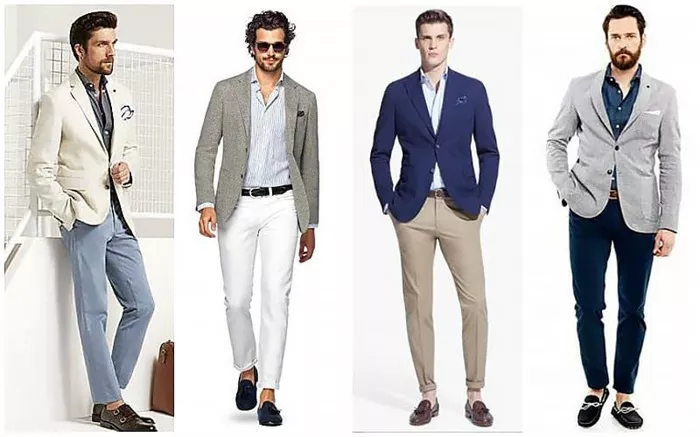Attending a fashion show as a guest presents a unique opportunity to showcase your personal style while respecting the event’s ambiance and the designers’ creativity. Whether you’re a fashion enthusiast, industry professional, or simply curious about the latest trends, dressing appropriately is key to making a positive impression. This guide will walk you through everything you need to know about what to wear to a fashion show as a male guest, from understanding dress codes to selecting the right outfit that balances style and sophistication.
Understanding the Dress Code
Fashion shows typically have specific dress codes that reflect the event’s theme and audience. While some shows encourage avant-garde and experimental attire, others may prefer a more classic and elegant approach. Understanding the dress code beforehand is crucial to ensure you blend in seamlessly while expressing your personal style.
Black Tie
Description: Black tie dress code is formal and sophisticated, often requiring a tuxedo.
Recommended Attire: A black or midnight blue tuxedo with a white dress shirt, black bow tie, and black dress shoes.
Tips: Ensure your tuxedo fits perfectly and opt for classic accessories to complement your look.
Business Formal
Description: Business formal attire is polished and professional without being as formal as black tie.
Recommended Attire: A well-tailored dark suit (navy or charcoal), dress shirt, conservative tie, and dress shoes.
Tips: Choose a tie that adds a touch of personality without overwhelming your outfit.
Creative/Avant-Garde
Description: This dress code allows for creativity and often encourages bold fashion choices.
Recommended Attire: Experiment with statement pieces, unique cuts, and unconventional accessories.
Tips: Balance creativity with cohesion to create a memorable yet tasteful ensemble.
Key Elements of Men’s Fashion Show Attire
When selecting your outfit for a fashion show, consider these key elements to ensure you look stylish and appropriate for the occasion.
Suit and Jacket
Suit Selection: Opt for a well-fitted suit that complements your body shape and adheres to the dress code.
Fabric: Choose high-quality fabrics such as wool or blends for a refined look.
Color: Classic colors like navy, charcoal, and black are versatile and suitable for most dress codes.
Fit: Tailoring is essential; ensure your suit jacket and trousers fit impeccably.
Shirts and Ties
Shirt: Select a crisp, well-fitted dress shirt in white or light blue as a versatile base.
Tie: Coordinate your tie with the rest of your outfit; consider textures, patterns, and colors that complement your suit.
Tie Bars and Accessories: Use tie bars or pocket squares to add a touch of personality while keeping it elegant.
See also:Men’s Workwear: A Guide To Dressing Sharp For Success
Footwear
Shoes: Choose classic dress shoes such as Oxfords or Derbies in black or brown leather.
Socks: Opt for socks that match your trousers or suit, avoiding loud patterns or colors that distract from your overall look.
Grooming: Ensure your shoes are polished, and your grooming is impeccable to complete your sophisticated appearance.
Accessories
Watch: A classic watch can elevate your outfit; choose one that matches your attire’s formality.
Belts: Coordinate your belt with your shoes, ensuring they are of similar color and style.
Eyewear: If necessary, select stylish eyewear that complements your face shape and outfit without overshadowing it.
Tailoring Your Outfit to the Event
Every fashion show has its unique atmosphere and audience. Tailoring your outfit to fit the event’s vibe shows respect for the occasion and its hosts.
Research the Designer: If attending a specific designer’s show, consider incorporating elements of their style into your outfit as a nod to their work.
Consider the Venue: Outdoor shows may require more practical footwear, while indoor shows often allow for more formal attire.
Climate and Season: Dress accordingly to the weather; layering can be practical and stylish in cooler temperatures.
Common Mistakes to Avoid
To ensure you make a positive impression at the fashion show, avoid these common pitfalls:
Overdressing or Underdressing: Misjudging the dress code can make you stand out for the wrong reasons.
Ill-Fitting Clothing: Poorly fitted suits or shoes can detract from an otherwise well-planned outfit.
Overly Trendy Outfits: While incorporating trends is encouraged, avoid outfits that are too flashy or impractical for the occasion.
Conclusion
Attending a fashion show as a guest offers a chance to celebrate creativity and style in the fashion industry. By understanding the dress code, carefully selecting your outfit, and paying attention to details, you can ensure that your attire complements the event while showcasing your personal style. Remember, confidence is key—wear your outfit with pride and enjoy the experience of being part of the exciting world of fashion.
Related topics:
Exploring Infant Wear: A Guide To Top Brands For Baby Clothing
Choosing The Perfect Toddler Christmas Dress
Affordable Plus Size Wedding Dresses: Your Ultimate Guide

